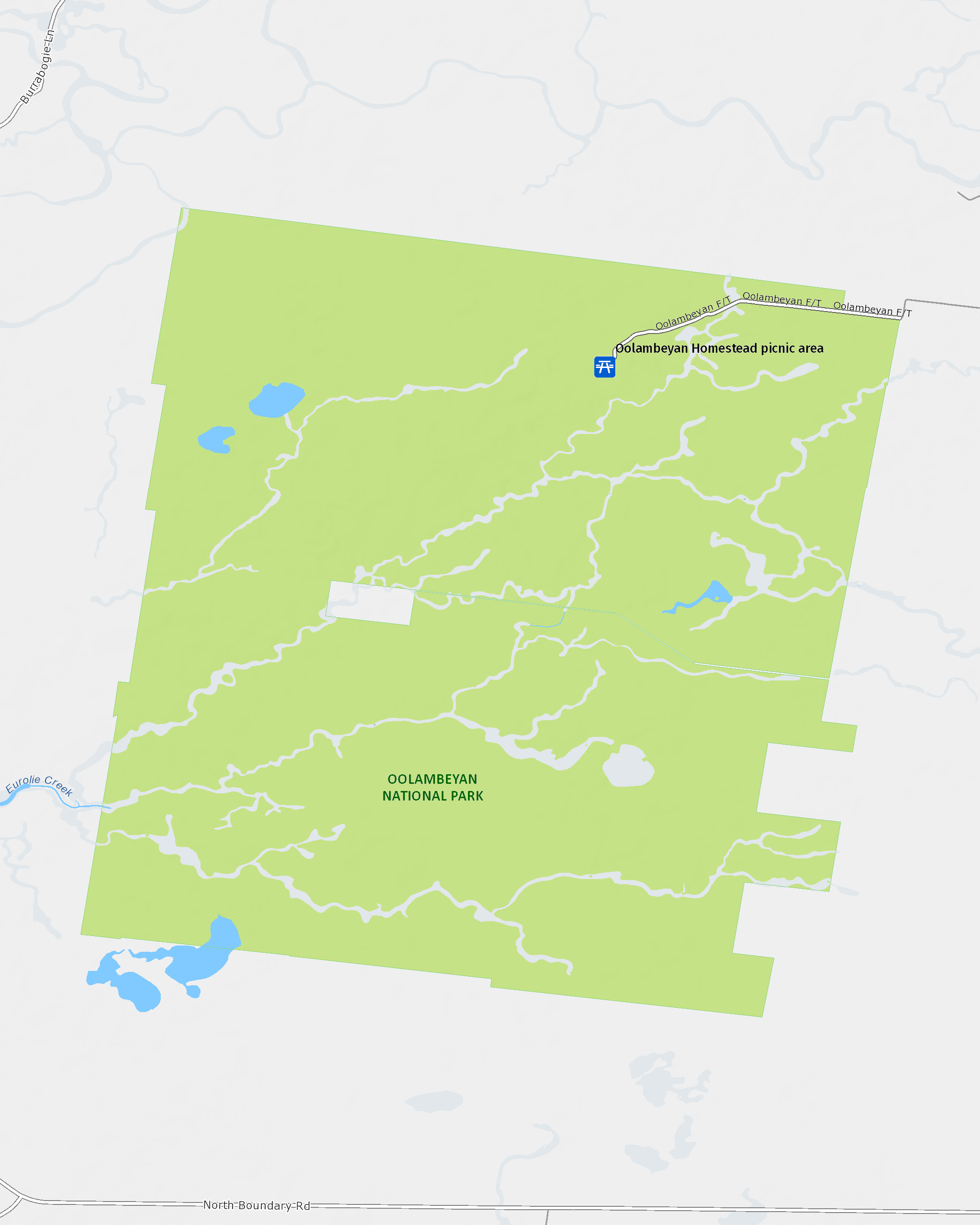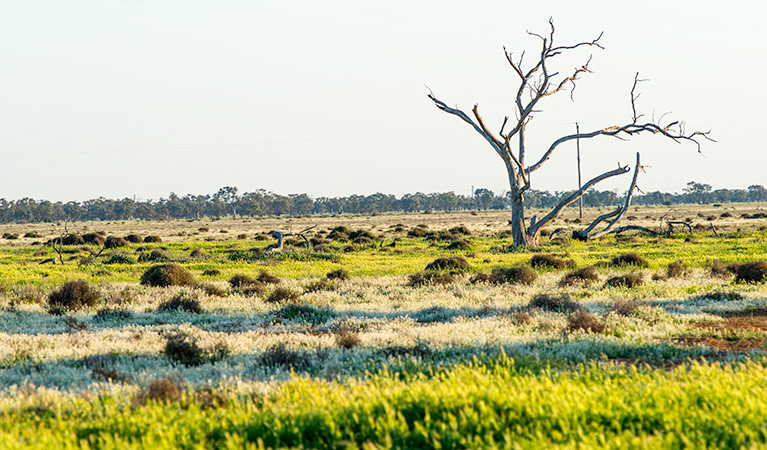Oolambeyan National Park
Overview
For day-trippers, Oolambeyan National Park provides excellent opportunities for birdwatching, picnicking and bushwalking, near Hay and Griffith.
Read more about Oolambeyan National Park
Escape for the day at Oolambeyan National Park. Just 85km from Hay, in the beautiful Riverina region, its grasslands and woodlands provide a great spot for picnicking, walking and birdwatching.
Find a shady spot for a picnic in the homestead’s surviving orchard. There’s an oval with a cricket pitch nearby and many historic buildings to see – great if you’ve got the kids with you. Galahs can often be seen in the area, as can kangaroos, which often graze on the oval.
For the adventurous, management trails from the homestead can be explored by cycling and hiking. After a day exploring Oolambeyan National Park, head to nearby Murrumbidgee Valley regional or national park, where you can camp overnight.
Local alerts
For the latest updates on fires, closures and other alerts in this area, see https://www.nationalparks.nsw.gov.au/visit-a-park/parks/oolambeyan-national-park/local-alerts
Contact
- in the Murray-Riverina region
Oolambeyan National Park is open from 6am to 8pm but may have to close at times due to poor weather or fire danger.
-
-
Griffith office
02 6966 8100
Contact hours: Monday to Friday, 9am to 4pm. Closed 1pm to 2pm. - 200 Yambil Street, Griffith NSW 2680
-
Email: npws.riverina@environment.nsw.gov.au
-
Griffith office
Visitor info
All the practical information you need to know about Oolambeyan National Park.
Map

Map legend

Maps and downloads
Nearby towns
Hay (85 km)
This exciting and innovative exhibition space uses contemporary design and cutting edge technology to tell the story of Australian sheep shearing. You'll meet the shearers, shed hands, cooks, classers, cockies, sheep and dogs behind the legends at this sparkling gallery-museum in Hay.
Griffith (125 km)
Griffith is at the heart of the vast Murrumbidgee Irrigation Area and produces about 60% of the grapes grown in the State. Today, there are more than a dozen wineries in the district with world-famous names. Visit De Bortoli or Hanwood and stock up on local produce, such as jams, preserves or pasta sauces.
Learn more
Oolambeyan National Park is a special place. Here are just some of the reasons why:
The recent past

Around Oolambeyan Homestead, constructed in 1926, there are many buildings that will be of huge interest to history buffs. There are ram sheds and a sweating shed (where sheep were held before shearing), some dating back to the 1930s. Jump on your bike or take a hike to find a remote rabbiter’s hut and other historic buildings.
- Oolambeyan Homestead picnic area Not just an excellent spot for picnicking, Oolambeyan Homestead picnic area in Oolambeyan National Park is also a great spot for birdwatching, walking and cycling.
Land of the Wiradjuri

This land represents a very important food-gathering region for the local Wiradjuri People. Aboriginal sites, including scarred trees, ovens and stone artefacts, can be found throughout the park.
Flying high

An incredible world of birds can be discovered at Oolambeyan National Park. The park was established to protect the plains-wanderer, however these elusive birds are very rare. Easier to spot are interesting woodland varieties -the yellow-rumped thornbill, superb fairy wren, red-capped robin and apostlebird - common around the homestead picnic area. Get your binoculars out if you fancy spotting a raptor. Wedge-tailed eagles are one of the most notable species you'll find here, building their nests in white cypress pines across the park, but you may also spy black kites and brown goshawks. As well as birds, Oolambeyan is home to many species of animals. Around the old homestead, you’re likely to spy the kangaroos – red kangaroos and eastern and western grey kangaroos – that reside here. During the heat of the day, they often rest under the boree trees, although they also graze on the short grass of the oval. Possums are also common residents, but keep your eyes peeled for shingle-backed lizards, lace monitors and carpet snakes.
- Oolambeyan Homestead picnic area Not just an excellent spot for picnicking, Oolambeyan Homestead picnic area in Oolambeyan National Park is also a great spot for birdwatching, walking and cycling.
Education resources (1)
What we're doing
Oolambeyan National Park has management strategies in place to protect and conserve the values of this park. View the detailed park and fire management documents.

